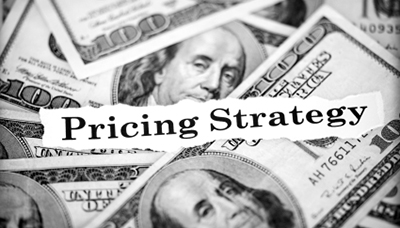Setting a Selling Price
Apr 29, 2014
There are huge differences in the way businesses or industries set their selling prices. From my point of view, they break down into two general categories. First, an industry where there is selling price competition and industry selling prices are primarily driven by the market. Hence, you are driven by what the market will bear and there is not much you can do to influence your selling price. In these cases, the market presumes a level of service and quality that is built-in to the sales process.
 This type of industry could be comparable to a commodity where in there is little difference from supplier to the next as far as the quality of the product and the level of service required to deliver the product to the customer. Industries such as steel and lumber or perhaps grain might be examples of products that are difficult to differentiate from other products in the same industry. The market is price driven and competitors are quick to note changes in market prices and adjust their prices almost instantaneously. I have worked in industries like this where in times of rapidly rising prices, selling price quotes are only good for a few days and in some case only a few hours because the market was moving so quickly.
This type of industry could be comparable to a commodity where in there is little difference from supplier to the next as far as the quality of the product and the level of service required to deliver the product to the customer. Industries such as steel and lumber or perhaps grain might be examples of products that are difficult to differentiate from other products in the same industry. The market is price driven and competitors are quick to note changes in market prices and adjust their prices almost instantaneously. I have worked in industries like this where in times of rapidly rising prices, selling price quotes are only good for a few days and in some case only a few hours because the market was moving so quickly.
In cases like this the costing process for determining selling price is really aimed at determining profitability for “a-go/no-go” decision. Once the minimum floor of profitability that will be accepted by the business is set, all future potential sales are measured to that standard with “a-go/no-go” decision process.
The second category is an industry where the company setting the selling price has more discretion based on its own targeted goals and is less influenced by the industry. This would be true in industries that have few competitors or unique niche products that can demand premium pricing. Some companies can find themselves in such a selling price setting market by delivering extraordinary service or quality in an industry that might otherwise be controlled by market prices.
In either case, businesses in this industry then can use product costing information that is prepared accurately and timely to have set selling prices. Competitors, if there are any, are always a factor in this process but if your company happens to be in an industry that allows you to have more discretion over how you set your prices then your costing information can help drive company profitability. This is a unique situation that requires accurate and timely cost information that is updated periodically to be able to maximize company profitability in a unique marketplace.
Whether the costing information developed to be used in the selling price setting process is also integrated into the control of the operations is dependent on management’s desires and is not mandatory as part of the overall costing process. However, those companies that are most successful in setting and using costing information to set selling prices do find useful purposes for applying that same cost information to the operations as processes change, cost change or activity levels are forced up or down.
Categories: Cost Accounting
